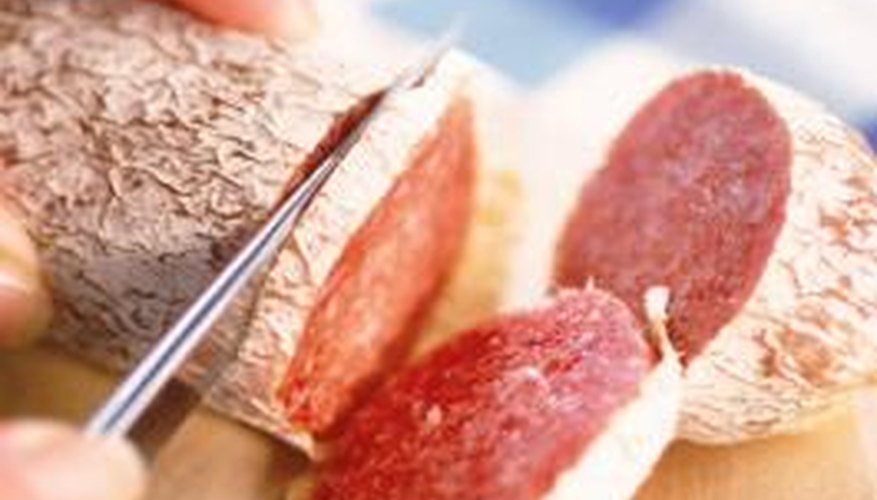The practice of making salami began over 2,000 years ago in Greece and Rome to preserve pork. Over the years, salami recipes have come to include red meat, poultry or a combination of these meats and spices. Although salami was created as a way to preserve meat, it will not preserve it indefinitely. Whatever type of salami you use, examine it to be sure it has not spoiled before consuming.
- The practice of making salami began over 2,000 years ago in Greece and Rome to preserve pork.
- Over the years, salami recipes have come to include red meat, poultry or a combination of these meats and spices.
Look at the package. Bloating packages mean that the salami has likely spoiled.
Smell the salami. If the smell is repulsive or foul it has gone bad.
Feel the salami. Cooked salami with a slimy texture should be thrown away.
Slice the salami if it is not already sliced. If cooked salami has green, blue and red moulds on the meat do not eat it. Cured salami will have some mould on the casing. However, cured meat with red mould should be discarded.
- Cooked salami with a slimy texture should be thrown away.
- Cured salami will have some mould on the casing.
Touch the edges of the slice. If you press down on the edges and the meat doesn't give, the salami has got too dry to eat. Additionally, if the edges of cooked salami have turned dark brown, discard the salami.
WARNING
Never eat salami that is past its expiration date.
